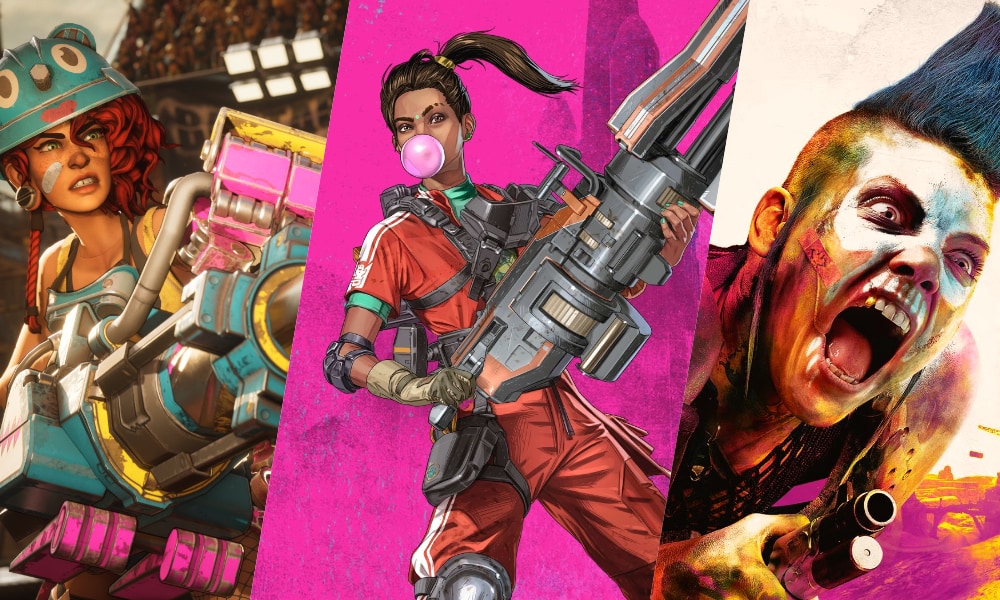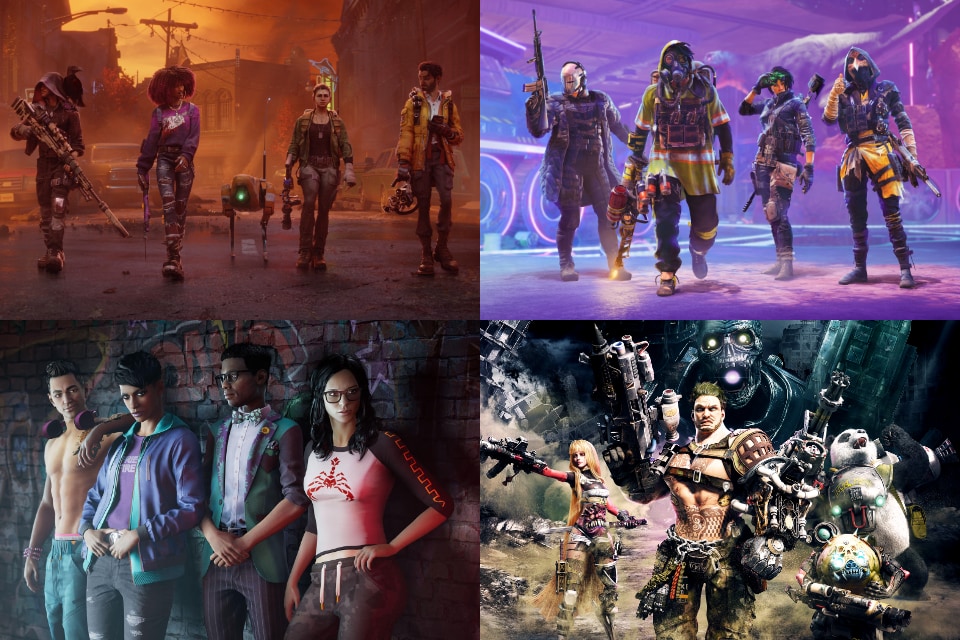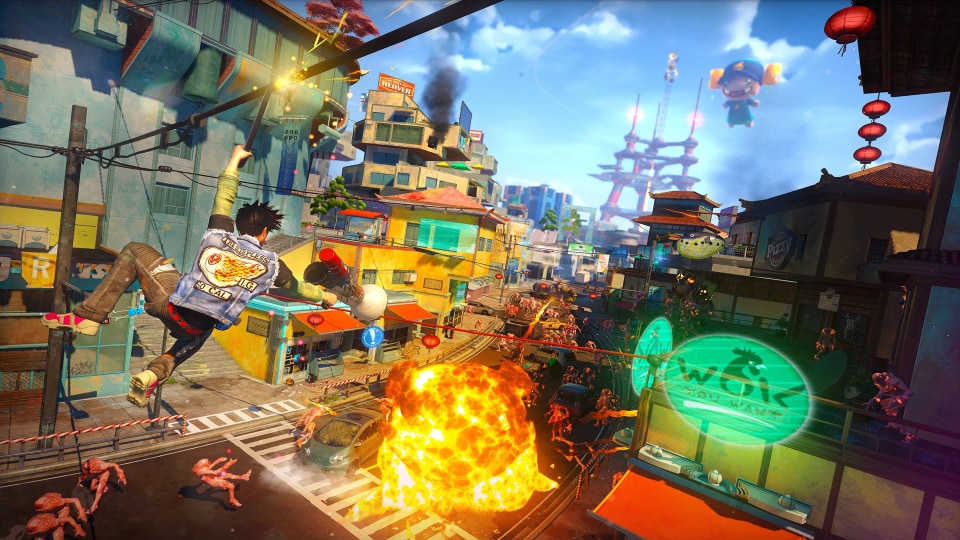The Magenta Game

Over the last few years, I’ve become more and more aware of a recent phenomena in popular video games. Redfall. Apex Legends. RAGE 2. Borderlands 3. Bleeding Edge. All of these games have something distinct about them, and I don’t mean among each other. Actually, that’s the point: they’re strikingly similar. Not in gameplay or technology, but in presentation and style. And it’s not something that was common in the industry until relatively recently.
Enter Ben “Yahtzee” Croshaw, who’s been producing his weekly video game review series Zero Punctuation since 2007. He coined the term “glorious PC gaming master race“ in his review of The Witcher, defined the “spectacle fighter” genre while reviewing MadWorld, and formally dubbed all modern military shooters “spunkgargleweewee” (seriously). He noticed this trend too, and gave these types of games a name: “Magenta games”.
What are the magenta games? Where did they come from? And what has any of this got to do with hot pink?
Defining the Genre
Funny, isn’t it, how whenever a game talks about being “over the top” or “tongue in cheek” that always seems to mean the same thing these days— that it’s going to look like an irresponsibly violent version of Jet Set Radio, probably cel shaded, every character is introduced with a freeze frame profile and dresses like a Tank Girl cosplayer with color blindness, and a lot of things will be magenta.
Oh yeah, and there’ll be a panda for some reason.
So what is it about a magenta game that makes it a magenta game? I’ve come to identify these as the core factors:
- An alt/punk art style. A prominent feature of the aesthetic is the use of vibrant neon colors, hence the term “magenta game”.
- A diverse cast of quirky characters. While these characters can be NPCs, they’re often playable. The genre is a natural companion of the hero shooter or other class-based genres.
- Quippy dialogue, meaning lines like “so that just happened” and “well, this is awkward”. Joss Whedon is often credited with popularizing this type of scriptwriting.
- An over-the-top, self-aware tone. The self-awareness is usually used as an excuse to do wacky things, rather than any interesting meta shenanigans.
- Bonus points if it’s a looter shooter.
That said, it’s important to note that just because a game has some of these traits doesn’t necessarily mean it’s a magenta game. Forspoken’s dialogue quipped its way into being one of the most clowned-on games of the last few years, but I wouldn’t call it a magenta game.
It’d be hard to identify exactly where the magenta game genre started, but I think Sunset Overdrive is a good candidate for patient zero; it was showing all the symptoms way back in 2014. The genre slowly grew in relevance from there until exploding around 2019, which I’m going to go ahead and declare as the year of Peak Magenta, hosting titles such as Apex Legends, Far Cry: New Dawn, RAGE 2, and Borderlands 3. And the genre is still alive and well today, with recent releases such as Redfall, Saints Row (2022), and Destiny 2: Lightfall carrying the torch.
Magenta: Origins
The magenta game as we know it today basically didn’t exist a decade ago. Of course, everything has to start somewhere. But while many genres have an obvious originator or popularizer (Rogue for roguelikes, Doom for first person shooters, Overwatch for online casinos), the magenta games genre just sort of appeared. I don’t think we can attribute magenta games to any particular game or technical innovation; instead, it was a product of the general state of the gaming landscape in the 2010s.
During the seventh generation of consoles, the games industry was enamored with a different trend. It was the time of darker, grittier, more “realistic” games. The grey-and-brown color palette dominated this era to the point where some games may as well have been rendered in sepia. Bloom, film grain, and other post-processing effects were over-applied to enhance the “cinematic” feel. The go-to protagonist would be a no-nonsense gruff-looking white dude, probably pictured on the cover holding a gun and looking grim. And these games took themselves very seriously.
And you know what? It sucked. Games were really, really boring. Certainly there are plenty of counterexamples, but most of the trend-followers ended up worse games for it.
The magenta game genre can be seen as a response to the trend of “gritty realism”— the pendulum swinging in the other direction. Games went from bland and brown to wacky and colorful; generic everymen were replaced with larger-than-life characters. The E3 2014 trailer for Sunset Overdrive really captures the zeitgeist with its neat bait-and-switch opener.

But, I have to mention the more cynical angle as well: the money angle.
The business model of video games has changed. At first it was just game sales, then DLCs and expansion packs, then microtransactions and loot boxes, and nowadays the “live service” model is in vogue. Whether that’s a good or bad thing isn’t the focus of this article (bad, by the way), but there’s no doubt that the way games are monetized affects the way they’re designed.
Lots of games today, particularly the free-to-play ones, make their dough by continually selling in-game cosmetics, since being perceived as pay-to-win is one of the few things that can still damage your game’s reputation. And at a certain point, any game that makes its money from a cosmetic economy will start selling “jokey” items. Because when quarterly revenue targets are on the line, consistency in tone or artstyle will be thrown right out the window if it means selling more skins. Halo Infinite didn’t even make it to the end of its first season before adding cat ear helmets to the store.
“So hey,” says the magenta game, “why not skip the serious bit and start shipping wacky cosmetics on day one?” That’s not to suggest that there isn’t an organic audience for these games, because there clearly is. But it’s certainly convenient for the guys with the cash.
My Take
My first introduction to magenta games was Sunset Overdrive, and I was all for it. Finally, a refreshing break from the monotonous grey-and-brown deluge we’d been stuck with for years. I was still in the honeymoon period with these games, when a lot of missteps can be forgiven. While I remember somewhat enjoying Sunset Overdrive’s writing when it came out, it does not have the same effect today. And as time has gone on, my general sentiment towards these two trends has started to converge.
See, that’s the thing about trends: it’s very easy for something that was once fresh and exciting to become clichéd and boring once everyone starts jumping on the bandwagon. Like the aesthetic, for instance. The alt/punk art style that magenta games wear like a security blanket was novel at first, but now it’s ubiquitous enough that often these games feel like they don’t have an aesthetic at all.
And yet, I still think Sunset Overdrive is one of the better entries in the genre. Sure, nowadays the dialogue makes me want to mute/defenestrate the TV (I shit you not, this game drops the term “awesome-pocalypse” unironically), but at least the game’s tone was in sync with its gameplay. This is a game where every car is a bounce-pad and every power line is a grind rail; of course they’d never be able to play it straight. That’s more than you can ask of quite a few magenta games, where the presentation is paired with bog-standard gameplay. For games trying so hard to appear “over the top”, they sure do tend to do so in the least interesting ways.

Then there’s the characters. While the character design in these games can be hit or miss for me, it’s the overly quippy dialogue that consistently makes these personalities more annoying than endearing. Even in cases where it’s not overtly grating, this style of dialogue tends to deflate the impact of the storytelling. It’s as if the game is saying, “the characters don’t care about what’s going on, so why should you?”
But specifics aside, there’s just something about the holistic experience of playing a magenta game that puts me off. To be honest, I’ve had a difficult time putting my finger on exactly what it is, but if I had to try and express it in one sentence, it’d be this: A magenta game gives off the image of someone trying desperately to be cool, which of course only makes them more uncool.
Then again, perhaps these games just aren’t for me. There’s no doubt that these games are beloved by many people (well, some of these games, at least). And while I think there’s plenty of similarities between the magenta games genre and the “gritty realism” trend, I can’t deny that this trend isn’t nearly as suffocating. There’ll always be trendy genres, and there’ll always be bad games, so ultimately, what’s the harm? They’re just games that I don’t like, and that’s okay. But I can’t help but feel a pang of regret whenever I see good ideas shackled to annoying tropes in the name of mass appeal.
Or maybe I’m just salty that we’re never getting a Titanfall 3.